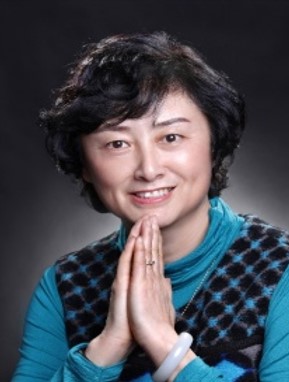
分子发育生物学研究组
电话:021-63846590-776520
邮箱:yjin@sibs.ac.cn
研究方向
多能干细胞命运决定的分子调控
个人简历
金颖研究员,病理生理学/药理学博士,博士研究生导师。2017年起任上海交通大学医学院基础医学院组织胚胎学与遗传发育学系主任,上海市生殖医学重点实验室主任,中国科学院上海营养与健康研究所干细胞研究组课题组长。
1978.3-1980.7哈尔滨医科大学医疗系
1980.8-1983.8中国医科大学医疗系,学士
1983.9-1988.9中国医学科学院/北京协和医科大学基础医学研究所病理生理/药理博士
1988.10-1994.9美国北德克萨斯州大学健康科学中心Research Associate
1994.9-1998.1美国德克萨斯大学西南医学中心Research Fellow
金颖研究员多年来集中研究胚胎干细胞,尤其是人胚胎干细胞在体外增殖和分化的调控机制,致力于揭示维持胚胎干细胞无限自我更新的信号、转录因子和表观遗传调控因子等组成的网络,旨在优化人胚胎干细胞的体外培养体系。此外,还关注人胚胎干细胞如何定向分化为神经细胞,尤其是如何形成神经系统不同区域的神经祖细胞,为获得临床疾病治疗需要的功能细胞奠定基础。她带领的研究团队在Cell Stem Cell, Cell Res, Dev Cell, J Clin Invest和PNAS等学术期刊上发表通讯作者论文60余篇,先后获得教育部自然科学奖二等奖,上海市科学技术奖二等奖和三等奖,中国干细胞研究创新奖等荣誉。
科研项目
1) 31730055,国家自然科学基金重点项目,转录后选择性剪接相关基因C20ORF14在人胚胎干细胞自我更新维持中的功能和机制研究,2018/01-2022/12,287万元,在研。
2) 2016YFA0100100,国家重点研发计划“干细胞及转化研究”重点专项,多能干细胞自我更新与维持的调控机制研究,2016/07-2020/12,872万元,在研,首席科学家。
3) XDB19020103,中国科学院先导科技专项(B),细胞命运决定的信号转导与转录调控,2016/06-2021/05,160万元,在研,主持子课题。
4) 31471393,国家自然科学基金面上项目,转录因子SOX2在人胚胎干细胞和神经祖细胞中的重要作用及机制研究,2014/01-2018/12,90万元,已结题。
5) 91419309,国家自然科学基金重大研究计划集成项目,H3K9去甲基化酶Jmjd1c/Kdm3c在发育多能性的诱导和维持中的作用及机制研究,2015/01-2016/12,200万元,已结题。
6) XDA01010102,中国科学院先导项目,研究多能干细胞发育分化为不同胚层细胞的调控机制,2011/01-2015/12,830.7万元,已结题,主持子课题。
7) 2010CB945200,国家重大科学研究计划(973项目),基于诱导多能干细胞技术的若干重大疾病模型与机理研究,2010/01-2014/12,2711万元,已结题,首席科学家。
主要论文与专著
通讯作者论文:
1.Hu J, Li S, Sun X, Fang Z, Wang L, Xiao F, Shao M, Ge L, Tang F, Gu J, Yu H, Guo Y, Guo X, Liao B*, Jin Y*. Stk40 deletion elevates c-JUN protein level and impairs mesoderm differentiation. J Biol Chem 2019 May 15. pii: jbc.RA119.007840. doi: 10.1074/jbc.RA119.007840. [Epub ahead of print]
2.Li S, Xiao F, Zhang J, Sun X, Wang H, Zeng Y, Hu J, Tang F, Gu J, Zhao Y, Jin Y*, Liao B*. Disruption of OCT4 Ubiquitination Increases OCT4 Protein Stability and ASH2L-B-Mediated H3K4 Methylation Promoting Pluripotency Acquisition. Stem Cell Reports 2018; 11(4):973-987.
3.Xu Y, Luo X, Fang Z, Zheng X, Zeng Y, Zhu C, Gu J, Tang F, Hu Y, Hu G, Jin Y*, Li H*. Transcription coactivator Cited1 acts as an inducer of trophoblast-like state from mouse embryonic stem cells through the activation of BMP signaling. Cell Death Dis 2018; 9(9):924-940.
4.Li T,Zhao H,Han X,Yao J,Zhang L,Guo Y,Shao Z,Jin Y*,Lai D*. The spontaneous differentiation and chromosome loss in iPSCs of human trisomy 18 syndrome. Cell Death Dis 2017; 8(10):e3149.
5.Xiao F, Liao B, Hu J, Li S, Zhao H, Sun M, Gun J, and Jin Y*. Jmjd1c Ensures Mouse Embryonic Stem Cell Self-renewal and Somatic Cell Reprogramming through Controlling MicroRNA expression. Stem Cell Rep 2017; 9(3):927-942.
6.Wang L,Yu H*,Cheng H,He K,Fang Z,Ge L,Cheng TandJin Y*. Deletion of Stk40 impairs definitive erythropoiesis in the mouse fetal liver. Cell Death Dis 2017; 8(3):e2722.
7.Wen J, Zeng Y, Fang Z, Gu J, Ge L, Tang F, Qu Z, Hu J, Cui Y, Zhang K, Wang J, Li S, Sun Y and Jin Y*. Single-cell analysis reveals lineage segregation in early post-implantation mouse embryos. J Biol Chem 2017; 292(23):9840-9854.
8.Zhao H, Han Z, Liu X, Gu J, Tang F, Wei G and Jin Y*. The chromatin remodeler protein Chd4 maintains embryonic stem cell identity by controlling pluripotency- and differentiation-associated genes. J Biol Chem 2017; 292(20):8507-8519.
9.Zhu Z, Li C, Zeng Y, Ding J, Qu Z, Gu J, Ge L, Tang F, Huang X, Zhou C, Wang P, Zheng D and Jin Y*. PHB associates with the HIRA complex to control an epigenetic-metabolic circuit in human ESCs. Cell Stem Cell 2017; 20(2):274-289.
10.He K, Hu J, Yu H, Wang L, Tang F, Gu J, Ge L, Wang H, Li S, Hu P and Jin Ying*. Serine/threonin kinase 40 (Stk40) functions as a novel regulator of skeletal muscle differentiation. J Biol Chem 2017; 292(1):351-360.
11.Zhou C, Yang X, Sun Y, Yu H, Zhang Y* and Jin Y*. Comprehensive profiling reveals mechanisms of SOX2-mediated cell fate specification in human ESCs and NPCs. Cell Res 2016; 26(2):171-189.
12.Yu H, He K, Wang L, Hu J, Gu J, Zhou C, Lu R, Jin Y*. Stk40 represses adipogenesis through translational control of CCAAT/enhancer-binding proteins. J Cell Sci 2015; 128(15): 2881-2890.
13.Zhu L, Zhang S and Jin Y*. Foxd3 suppresses NFAT-mediated differentiation to maintain self-renewal of embryonic stem cells. EMBO Rep 2014; 15(12):1286-1296.
14.Yang H, Liu Z, Ma Y, Zhong C, Yin Q, Zhou C, Shi D, Cai Y, Zhao H, Wang H, Tang F, Wang Y, Zhang C, Lai D, Jin Y*, Sun Q*, Li J*. Generation of haploid embryonic stem cells from Macaca fascicularis monkey parthenotes. Cell Res 2013; 23(10):1187-1200.
15.Zhou Y, Jiang H, Gu J, Tang Y, Shen N and Jin Y*. MicroRNA-195 targets ADP-ribosylation factor like protein 2 inducing apoptosis in human embryonic stem cell-derived neural progenitor cells. Cell Death Dis 2013; 4:e695-706.
16.Cui L, Guan Y, Qu Z, Zhang J, Liao B, Ma B, Qian J, Li D, Li W, Xu G* and Jin Y*. Wnt signaling determines tumorigenicity and function of ESC-derived retinal progenitors. J Clin Invest 2013; 123(4):1647-1661.
17.Yu H, He K, Li L, Sun L, Tang F, Li R, Ning W and Jin Y*. Deletion of Stk40 in the mouse causes respiratory failure and death at birth. J Biol Chem 2013; 288(8):5342-5352.
18.Ma Y, Li C, Gu J, Tang F, Li C, Li P, Ping P, Yang S, Li Z* and Jin Y*. Aberrant gene expression profiles in pluripotent stem cells induced fro fibroblasts of a Klinefelter syndrome patient. J Biol Chem 2012; 287(46):38970-38979.
19.Zhang H, Ma Y, Gu J, Liao B, Li J, Wong J* and Jin Y*. Reprogramming of somatic cells via TAT-mediated protein transduction of recombinant factors. Biomaterials 2012; 33(20): 5047-5055.
20.Yang A, Shi G, Zhou C, Lu R, Li H, Sun L and Jin Y*. Nucleolin maintains embryonic stem cell self-renewal by suppression of p53 protein-dependent pathway. J Biol Chem 2011; 286(50): 43370-43382.
21.Lu R, Yang A and Jin Y*. Dual functions of T-box3 in the control of self-renewal and extraembryonic endoderm differentiation in mouse embryonic stem cells. J Biol Chem 2011; 286(10): 8425-8436.
22.Li X, Zhu L, Yang A, Lin J, Tang F, Jin S, Wei Z, Li J and Jin Y*. Calcineurin-NFAT signaling critically regulates early lineage specification in mouse embryonic stem cells and embryos. Cell Stem Cell 2011; 8(1):46-58.
23.Fang H, Yang Y, Li C, Fu S, Yang Z, Jin G, Wang, K, Zhang J*, Jin Y*. Transcriptome analysis of early organogenesis in human embryos. Dev Cell 2010; 19(1):174-184.
24.Li L, Sun L, Gao F, Jiang J, Yang Y, Li C, Gu J, Wei Z, Yang A, Lu R, Ma Y, Tang F, Kwon S, Zhao Y, Li J, Jin Y*. Stk40 links the pluripotency factor Oct4 to the Erk/MAPK pathway and controls extraembryonic endoderm differentiation. PNAS 2010; 107(4):1402-1407.
25.Liao B and Jin Y*. Wwp2 mediates Oct4 ubiquitination and its auto-ubiquitination in a dosage-dependent manner. Cell Res 2010; 20(3):332-344.
26.Li C, Zhou J, Shi G, Ma Y, Yang Y, Gu J, Yu H, Jin S, Wei Z, Chen F, Jin Y*. Pluripotency can be rapidly and efficiently induced in human amniotic fluid-derived cells. Hum Mol Genet 2009; 18(22):4340-4349.
27.Gao F, Kwon SW, Zhao Y, Jin Y*. PARP1 poly(ADP-ribosyl)ates Sox2 to control Sox2 protein levels and FGF4 expression during embryonic stem cell differentiation. J Biol Chem 2009; 284(33): 22263-22273.
28.Li H, Wang B, Yang A, Lu R, Wang W, Zhou Y, Shi G, Kwon SW, Zhao Y, Jin Y*. Ly-1 antibody reactive clone is an important nucleolar protein for control of self-renewal and differentiation in embryonic stem cells. Stem Cells 2009; 27(6): 1244-1254.
29.Xu H, Wang W, Li C, Yu H, Yang A, Wang B, Jin Y*. WWP2 promotes degradation of transcription factor OCT4 in human embryonic stem cells. Cell Res 2009; 19(5):561-573.
30.Zhong X, Jin Y*. Critical roles of coactivator p300 in mouse embryonic stem cell differentiation and Nanog expression. J Biol Chem 2009; 284(14):9168-9175.
31.Li C, Yang Y, Gu J, Ma Y, Jin Y*. Derivation and transcriptional profiling analysis of pluripotent stem cell lines from rat blastocysts. Cell Res 2009; 19(2):173-186.
32.Jiang H, Sun B, Wang W, Zhang Z, Gao F, Shi G, Cui B, Kong X, He Z, Ding X, Kuang Y, Fei J, Sun YJ, Feng Y, Jin Y*. Activation of paternally expressed imprinted genes in newly derived germline-competent mouse parthenogenetic embryonic stem cell lines. Cell Res 2007; 17(9):792-803.
33.Li H, Zhang Z, Wang B, Zhang J, Zhao Y, Jin Y*. Wwp2-mediated ubiquitination of the RNA polymerase II large subunit in mouse embryonic pluripotent stem cells. Mol Cell Biol 2007; 27(15): 5296-5305.
34.Zhang Z, Liao B, Xu M, Jin Y*. Post-translation Modification of POU domain transcription factor Oct-4 by SUMO-1. FASEB J 2007; 21(12):3042-3051.
35.Sun B, Yang A, Feng Y, Sun Y, Zhu Y, Zhang Y, Jiang H, Li C, Gao F, Zhang Z, Wang W, Kong X, Jin G, Fu S, Jin Y*. Temporal and parental-specific expression of imprinted genes in a newly derived Chinese human embryonic stem cell line and embryoid bodies. Hum Mol Genet 2006; 15(1):65-75.
36.Xu H, Liao B, Zhang Q, Wang B, Li H, Zhong X, Sheng H, Zhao Y, Zhao Y, JinY*. Wwp2, an E3 ubiquitin ligase that targets transcription factor Oct4 for ubiquitination. J Biol Chem 2004; 279:23495-23503.
37.*Corresponding Author
邀请综述:
1.Zhao H, Jin Y*. Signaling networks in the control of pluripotency. Current Opinion in Genetics & Development 2017; 46:141-148.
2.Zhang H, Jin Y*. Mouse induced pluripotent stem cells. In: J.Z. Kubiak (ed.), Mouse Development, Results and Problems in Cell Differentiation 55, DOI 10.1007/978-3-642-30406-4_20, Springer-Verlag Berlin Heidelber 2012, pages 395-411.
3.Zhou Y, Jin Y*. Differentiation of Human Embryonic Stem Cells into Neural Lineage Cells. In M.A. Hayat (ed.), Stem Cells and Cancer Stem Cells 2012; 7:229-239.
4.Shi G, Jin Y*. Role of Oct4 in maintaining and regaining stem cell pluripotency. Stem Cell Res Ther 2010; 1(5): 39.
5.Jin Y*. Human embryonic stem cells create their own niche. Cell Res 2007; 17(9):744-745.
6.*Corresponding Author
著作:
1.《医学发育生物学(第四版)》,科学出版社,2018年,参编。
2.《现代干细胞与再生医学》,人民卫生出版社,2017年,副主编。
3.《干细胞与再生医学实验教程》,人民卫生出版社,2016年,副主编。
4.《干细胞与再生医学习题集》人民卫生出版社,2015年,副主编。
5.全国高等学校教材《干细胞与再生医学》人民卫生出版社,2014年,副主编。
6.全国高等学校医学研究生规划教材《创伤、烧伤与再生医学》第一版人民卫生出版社,2014年,参编。
7.教育部学位管理与研究生司推荐研究生教学用书《医学发育生物学(第三版)》科学出版社,2012年,参编。
8.《干细胞原理、技术与临床》化学工业出版社,2006年,参编。
9.Zhang H, Jin Y*. Mouse induced pluripotent stem cells. In: J.Z. Kubiak (ed.), Mouse Development, Results and Problems in Cell Differentiation 55, DOI 10.1007/978-3-642-30406-4_20, Springer-Verlag Berlin Heidelber 2012, pages 395-411.
专利与技术许可
以第一完成人身份申请或已获得授权发明专利5项:
1.Oct4泛素化修饰突变体在提高诱导体细胞重编程效率中的应用,申请号201810783982.4,金颖,廖兵,李爽,肖峰;
2.一种PRRT2蛋白相关的抗原表位肽及其应用,申请号2014103873851,金颖、李春;
3.一种调控诱导产生的视网膜前体细胞的方法,ZL 2012 1 0279963.0,金颖、徐国彤、崔璐、管圆;
4.抗小鼠Stk40多克隆抗体及其制备,ZL 2011 1 0214235.7,金颖、杨阿聪;
5.调控胚胎干细胞及早期胚胎的胚层分化的方法和试剂,ZL 2010 1 0268307.1,金颖、李翔、朱莉莉。
荣誉与奖励
1.2001年上海曙光学者;
2.2004年度获得中国科学院“百人计划”支持;
3.2006年当选为上海市优秀学科带头人;
4.2009年度第二届百名华侨华人专业人士-杰出创业奖;
5.2009-2010年度获上海市“三八”红旗手称号;
6.2010年度中国科学院“朱李月华优秀教师”奖;
7.2013年度、2016年度中国科学院上海生命科学研究院/上海交通大学医学院健康科学研究所“杰出研究员”奖;
8.2011年度、2012年度、2017年度中国科学院“优秀研究生指导教师”奖;
9.2011年度、2016年度中国科学院上海生命科学研究院/上海交通大学医学院健康科学研究所优秀共产党员;
10.“胚胎干细胞及早期胚胎发育的分子调控机制研究”获得2012年教育部自然科学奖二等奖(第一完成人);
11.“胚胎干细胞中Oct4转录因子的分子调控机制研究”获得2013年获得上海市科学技术奖三等奖(第一完成人);
12.“以多能干细胞为模型对细胞命运决定分子机制的研究”获得2014年上海市自然科学奖二等奖(第一完成人);
13.2017年、2018年实验室获得中国细胞生物学学会全国联动实验室开放日科普活动优秀奖;
14.2017年中国细胞生物学学会干细胞生物学分会干细胞研究创新奖;
15.2018年度上海交通大学基础医学院优秀员工奖。



